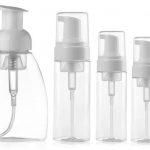LCDs are one of the most popular technologies used in display products – they’re part of TVs, mobile phones, home and office appliances, and others. Not many people realize that devices with this technology have a specific temperature range in which they operate at the optimal level. What spectrum is it?
The perfect LCD temperature range
So what is the optimal temperature range for LCD panels? Typically, they should be used in temperatures from 0°C (32°F) to around 50°C (122°F). The storage limits are a little bit wider though, and cover the range from -20°C (-4°F) up to 60°C (140°F). It’s worth mentioning that sometimes LCDs can be adapted to work outside these basic temperature ranges, but that’s a story for another day.
LCDs and the effects of heat on the devices
Why shouldn’t we use or store LCD devices in low or high temperatures? Let’s start with heat which is the most common threat to electronics. For one, exposure to this element can impact the liquid crystal layer and its alignments. As a result, the backlight won’t be able to pass through properly, and dark spots may appear on the LCD screen. High temperatures can significantly shorten the battery life as well as slow down the device’s response time in order to stop additional heat generation. What’s worse, prolonged heat exposure can turn the LCD displays not fit for use in various ways. It may destroy the liquid crystal layer and crack or even melt the hardware.
Moisture and heat in LCDs
Of course, LCD devices can also generate heat from within, usually through the LED backlight or the internal circuitry, and this type of high temperature may cause damage as well. That’s why it’s worth choosing devices that are equipped with cooling fans, vents, and even an entire air conditioning system. However, the air vents need to have a specific shape that enables just the movement of air without the possibility of moisture accumulation. Why is it so important? Because a combination of moisture and heat can form condensation, which will fog up the LCD display. It even can cause a device to short-circuit and power off.
LCD displays vs low temperatures
Now, what about exposure to cold? Among the most common effects low temperatures have on LCDs, we can highlight lagging, slower response time, and an occurrence called “ghosting” – a discoloration during which an image is burned onto the screen. Similarly to heat exposure, the liquid crystals are the most fragile layer in LCDs, as they are between a liquid and a solid form and are predisposed to freezing. Cold probably won’t have such a negative impact on the devices as the high temperatures we mentioned before, but it’s best to take precautions and store them bundled up in some additional layers. You can also reach for adapted LCD devices that help with the proper temperature range preservation, i.e. screen enclosure insulation or heaters.


